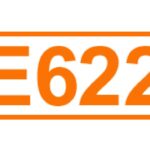Are you ready to dive into the colorful world of crochet hook sizes? Whether you’re a seasoned crocheter or just starting out, understanding crochet hook sizes is essential for creating beautiful and well-fitting projects. In this comprehensive guide, we’ll explore everything you need to know about crochet hook sizes chart – from choosing the right size for your yarn to the effects of using the wrong one. Let’s unravel the mystery behind crochet hook sizes and unleash your creativity!
Crochet Gauge Square
Have you ever heard of the crochet gauge square? It’s a small swatch that allows you to check your tension and ensure that your project turns out just right. By crocheting a sample square using the recommended hook size and yarn, you can measure how many stitches and rows fit within a specific measurement.
The crochet gauge square serves as a test run before diving into your main project. It helps you adjust your tension or switch to a different hook size if needed. Remember, everyone crochets differently, so taking the time to create a gauge square can save you from unraveling hours of work later on.
Don’t skip this important step in your crochet journey! Embrace the gauge square as your secret weapon for achieving perfectly sized and fitting creations every time.
Hook Size Recommendation for Beginners
Are you new to crochet and feeling overwhelmed by all the different hook sizes available? Don’t worry, we’ve got you covered with some beginner-friendly recommendations to help you start your crocheting journey on the right foot!
For beginners, it’s best to start with a mid-range hook size such as a 5mm or 6mm. These sizes are versatile and work well with most yarn weights, making them ideal for practicing various stitches without getting too frustrated.
Choosing a larger hook size can make it easier to see your stitches and correct any mistakes as you go along. On the other hand, using a smaller hook size will result in tighter stitches, which may be more challenging for beginners to work with initially.
Experimenting with different hook sizes is key to finding what works best for you and your preferred crocheting style. Remember, practice makes perfect, so don’t be afraid to try out different options until you find the perfect fit for your projects!
Crochet Hook Conversion Chart
Have you ever found a beautiful crochet pattern from another country and struggled to figure out the hook size conversion? Understanding the crochet hook conversion chart can be a game-changer for your projects. It allows you to easily switch between metric, US, and UK sizing without any confusion.
The conversion chart typically includes details on millimeters, US sizes, and UK sizes for various crochet hooks. By referring to this chart, you can ensure that you’re using the right hook size as recommended in the pattern. This simplifies your crocheting process and helps avoid any discrepancies in gauge or tension.
Whether you prefer working with metric measurements or are accustomed to US sizing, having access to a comprehensive crochet hook conversion chart is invaluable. It streamlines your shopping experience when purchasing new hooks and ensures consistency across different patterns from around the world.
Next time you come across a fabulous pattern written in unfamiliar sizing terms, consult a reliable crochet hook conversion chart to seamlessly continue creating stunning pieces with ease!
An Overview Of Crochet Hook Sizes
When it comes to crochet hook sizes, understanding the range of options available can open up a whole new world of creative possibilities. Crochet hooks come in various sizes, ranging from tiny steel hooks to larger ergonomic ones designed for comfort. Each size is indicated by a number or letter, with smaller numbers corresponding to thinner hooks and larger numbers indicating thicker hooks.
The size of your crochet hook will directly impact the look and feel of your finished project. A smaller hook creates tighter stitches suitable for intricate designs, while a larger hook produces looser stitches ideal for chunky projects like blankets or scarves. Experimenting with different hook sizes can help you achieve the desired texture and drape for your creations.
Whether you’re a beginner just starting or an experienced crocheter looking to expand your skills, having a good grasp of crochet hook sizes is essential. From delicate lacework to cozy afghans, choosing the right size hook ensures that your projects turn out just as you envisioned them.
How To Choose Yarn For Different Crochet Hook Sizes
When it comes to choosing yarn for different crochet hook sizes, there are a few key factors to consider. The weight and thickness of the yarn will play a significant role in determining which hook size is best suited for your project.
For smaller hook sizes, such as those used for intricate lacework or amigurumi projects, finer yarns like fingering or lace weight are ideal. These delicate yarns create tight stitches that highlight intricate details.
On the other hand, larger hook sizes require thicker yarns like bulky or super bulky weight. This chunkier yarn creates bold textures and works up quickly for cozy blankets or oversized garments.
Consider the desired drape and feel of your finished piece when selecting yarn. Soft fibers like merino wool or alpaca can add warmth and luxury to winter accessories, while cotton or linen blends are perfect for lightweight summer tops.
Experimenting with different combinations of yarn weights and crochet hooks can lead to unique designs that showcase your creativity and skills!
The Best Yarn For Any Hook
When it comes to choosing the best yarn for any crochet hook size, there are a few factors to consider. The weight of the yarn plays a significant role in determining which hook size will work best. For thicker yarns like bulky or super bulky, larger hook sizes such as K-10.5 (6.5mm) or L-11 (8mm) are recommended.
On the other hand, finer yarns like lace or sock weight require smaller hooks such as E-4 (3.5mm) or F-5 (3.75mm). It’s essential to match the thickness of your yarn with the appropriate hook size to achieve the desired tension and stitch definition in your project.
Additionally, consider the fiber content of the yarn when selecting a hook size. Natural fibers like wool may behave differently than acrylic or cotton, so experiment with different combinations to find what works best for you.
Finding the best yarn for your crochet project is about experimentation and personal preference – so don’t be afraid to try out different options until you discover what works perfectly for you!
What Happens If You Use The Wrong Size?
When it comes to crochet, using the wrong hook size can lead to unexpected results. If you use a hook that’s too small for your yarn weight, your stitches may end up tight and stiff. This can affect the drape and overall appearance of your project. On the other hand, using a hook that’s too large can result in loose and floppy stitches.
Choosing the Crochet Hook Sizes Chart is crucial for achieving the desired tension and gauge in your crocheting. It ensures that your finished piece turns out exactly as intended by the pattern designer. Additionally, using the right hook size can help prevent hand fatigue during long crocheting sessions.
Experimenting with different hook sizes allows you to explore how they impact stitch definition, texture, and overall look of your projects. It’s all part of the creative process! So next time you pick up your crochet project, pay attention to the hook size – it can make a big difference in the final outcome.
How To Pick The Right Size
When it comes to picking the right crochet hook size, there are a few things to consider. First, take into account the yarn weight you’ll be using for your project. A thicker yarn typically requires a larger hook size, while a finer yarn will work best with a smaller hook.
Next, think about the crochet pattern you’ll be working on. Some patterns may specify a recommended hook size to achieve the desired gauge and texture. It’s important to follow these guidelines for optimal results.
Experimenting with different hook sizes can also help you determine the right one for your project. By trying out various sizes, you can see how they affect the tension and overall look of your stitches.
Remember that personal preference plays a role in selecting the right hook size as well. Some crocheters prefer larger hooks for faster projects, while others enjoy the precision that smaller hooks offer. Finding the perfect size is all about trial and error until you discover what works best for you!
Standard Crochet Hook Sizes Chart
When it comes to crochet hook sizes, understanding the standard chart is essential for every crocheter. The standard crochet hook size chart typically ranges from the smallest steel hooks starting at 00 (3.5 mm) to larger ergonomic handled hooks going up to size Q (15.75 mm). Each size is designated with a letter or number indicating its diameter.
The smaller the number or letter, the finer and delicate your project will be, whereas larger sizes are ideal for chunky yarns and quicker projects. It’s crucial to match your hook size with your yarn weight for optimal results in tension and drape of your finished piece.
Whether you’re creating intricate lacework or cozy blankets, having a good grasp of the standard crochet hook size chart will help you select the perfect tool for each project effortlessly.
Steel Crochet Hook Size Chart
Steel crochet hooks are known for their durability and precision, making them a popular choice among crocheters. The steel crochet hook size chart differs from regular hook sizes as it uses numbered sizing ranging from 00 to 14, with smaller numbers indicating larger hooks. These tiny steel hooks are perfect for delicate projects like lacework or amigurumi, where intricate detailing is key.
When working with steel crochet hooks, keep in mind that the yarn weight should be finer to match the small hook size. Thinner yarn will allow you to achieve tight stitches and create intricate patterns with ease. It’s important to select the right combination of yarn weight and steel hook size to ensure your project turns out as intended.
Experimenting with different steel Crochet Hook Sizes Chart can lead to unique textures and designs in your creations. Don’t be afraid to try out new combinations and see how they enhance your projects!
What are the effects of choosing the wrong hook size?
Choosing the wrong hook size in crochet can have various effects on your project. If you use a hook that is too small for the yarn weight, your stitches may be tight and difficult to work with. This can lead to frustration and uneven tension in your piece.
On the other hand, using a hook that is too large for the yarn can result in loose and floppy stitches that lack structure. Your finished project may end up looking sloppy or oversized compared to what you intended. It’s essential to pay attention to the recommended hook size on yarn labels or patterns to achieve the desired outcome.
Additionally, selecting the wrong hook size can affect the overall drape and texture of your project. A mismatched hook size can alter how light or heavy the fabric feels, impacting its functionality and aesthetic appeal. Taking time to choose the correct hook size will help you create beautiful, well-executed crochet pieces every time.
Yarn weights and crochet hook sizes
When it comes to crochet projects, understanding yarn weights and Crochet Hook Sizes Chart is essential. Yarn weight refers to the thickness of the yarn, ranging from super fine to jumbo. Different yarn weights require specific hook sizes for optimal results.
For lightweight yarns like lace or fingering weight, smaller hooks such as size B (2.25mm) to E (3.5mm) are recommended. Medium-weight yarns like worsted or aran work well with H (5mm) to J (6mm) hooks. Bulky and super bulky yarns call for larger hooks like N/P (10mm) to S/19 (15mm).
Matching the right hook size with the corresponding yarn weight ensures that your stitches are consistent and your project turns out as intended. Experimenting with different combinations can lead to unique textures and designs in your crocheted creations!
The Ultimate Guide To Crochet Hook Sizes
When it comes to crochet hook sizes, understanding the various options available can truly elevate your crafting experience. From choosing the right size for your yarn weight to creating the perfect gauge square, each decision plays a crucial role in achieving your desired outcome.
Beginners often find themselves overwhelmed by the range of crochet Crochet Hook Sizes Chart on the market. However, with a little guidance and practice, selecting the appropriate hook size will become second nature. Utilizing a hook size conversion chart can be particularly helpful in navigating this process smoothly.
Whether you’re working with standard or steel crochet hooks, having a clear understanding of their respective sizes is essential. This knowledge empowers you to make informed decisions that result in beautifully crafted pieces every time.
Remember, pairing the correct yarn weight with your chosen hook size is key to achieving optimal results. By paying attention to these details and experimenting with different combinations, you’ll discover what works best for your unique style and preferences.
Conclusion
Understanding Crochet Hook Sizes Chart is essential for any crocheter looking to create beautiful and well-fitting projects. By referring to the crochet hook size chart guide, beginners can easily choose the right hook size for their yarn and achieve accurate gauge swatches. Remember that using the wrong hook size can lead to issues with tension, stitch size, and overall project success.
By familiarizing yourself with different crochet hook sizes, materials, and conversions, you will be better equipped to tackle a wide range of patterns and projects. Experimenting with various yarn weights and hook sizes will also allow you to explore different textures and techniques in your crocheting journey.
With this ultimate guide to Crochet Hook Sizes Chart at your disposal, you can confidently dive into new patterns knowing that you have the knowledge to select the perfect tools for the job. Happy crocheting!







